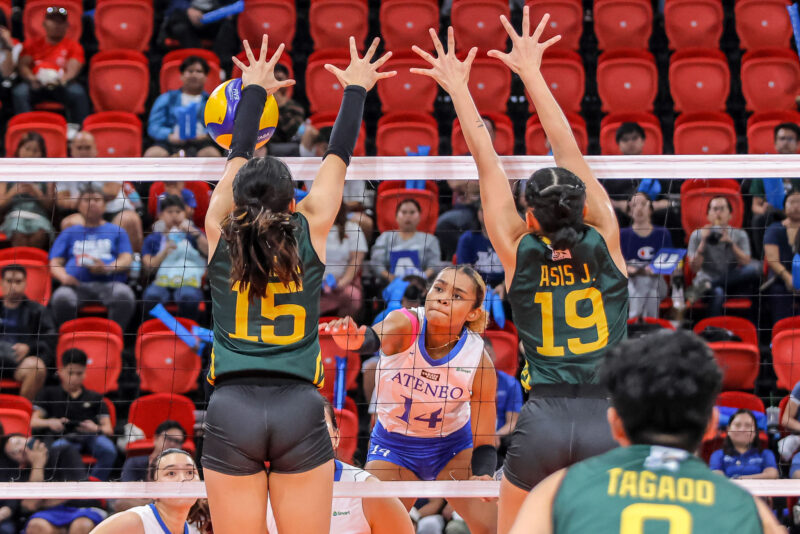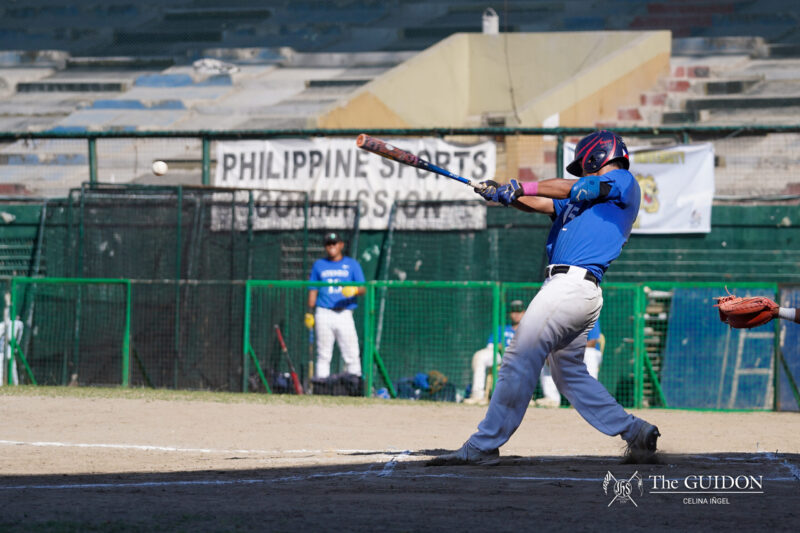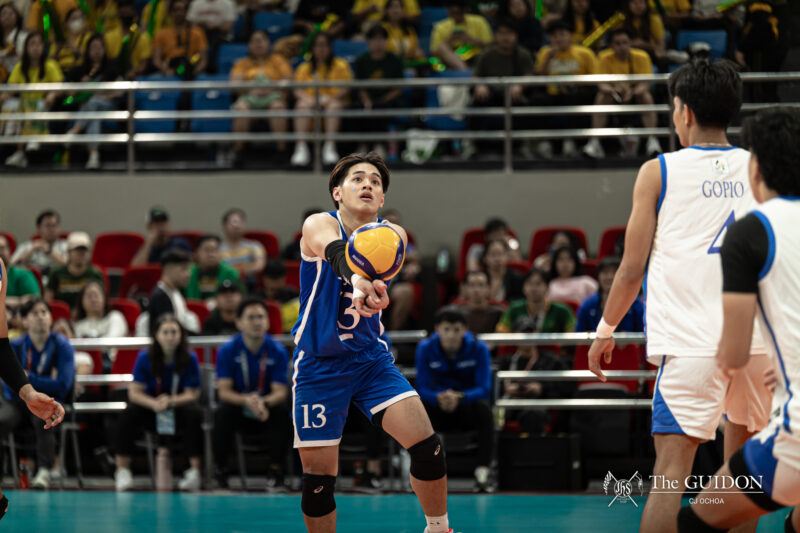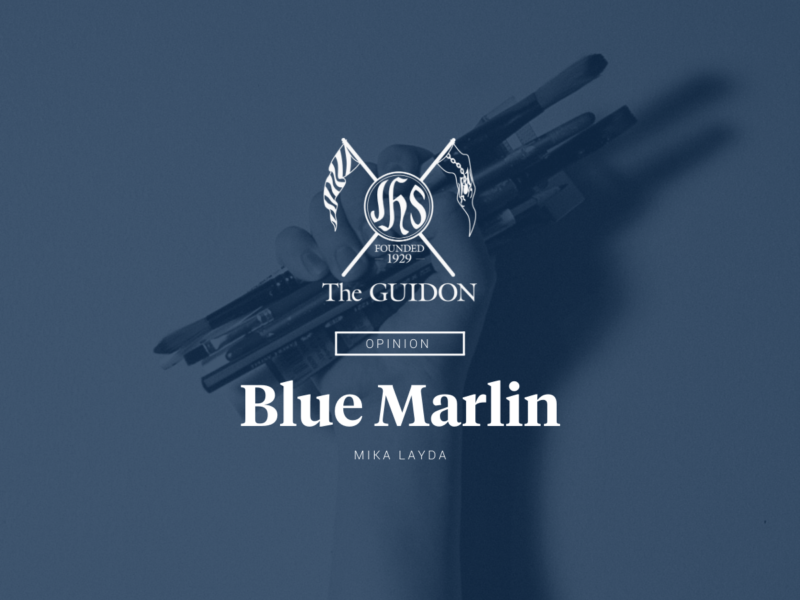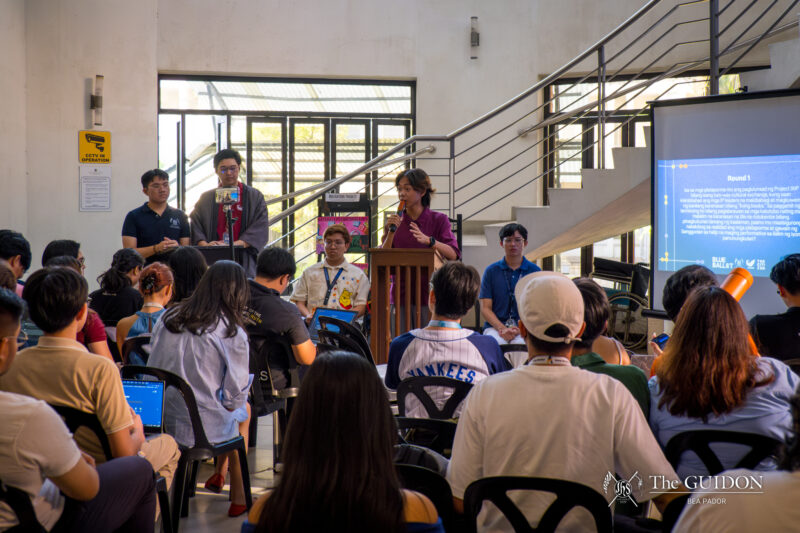Last issue, The GUIDON published an article showcasing the athletes’ opinions regarding the Nike sponsorship of Ateneo teams. Following the article The GUIDON conducted further research, which will be presented in this piece. This is the second of a three part series.
Seven years ago, when Ateneo signed a contract with Adidas to sponsor all athletic teams, the concept of team branding was very new to the Philippine sports marketing industry. Unlike NCAA teams in the United States, university branding such as that of the iconic Texas Longhorns, was a foreign concept.
Nina Samaco, the Assistant to the Director for Marketing of the University Athletics Office (UAO) said that the first contract Ateneo ever had with Adidas only encompassed the basketball team, but from then it has progressed to cover all UAAP teams. This is in line with an administration rule which prohibits a sponsor to cover individual teams only.
As it turns out, sponsorships aren’t that simple a deal. Provide teams with uniforms, the necessary gear to compete, put the brand’s logo and the school’s seal and that’s it, right? Not quite.
Three stripes no more
Within the long negotiations of what is included in a sponsorship—the uniforms, footwear and other equipment to be provided—also come the expectations to oblige to the brand’s conditions. Nike, as compared to Adidas, had one major condition which put a slight strain on the execution of the sponsorship.
One of the major issues posed in the Adidas contract was the strict provision with regard to footwear. From head to toe, their requirement was for Ateneo athletes to be in Adidas apparel—it was a problem given that some athletes favored other brands specific to their sport.
The Nike sponsorship however, took into consideration the fact that some athletes prefer, or are under contracts with, other brands.
“All athletes must wear the playing jersey provided to their team. But for all other accessories, Nike is open to allowing them to use any other brand as long as they feel that it would make them perform better or to honor a personal contract that they already have,” Samaco said.
Regarding the contract, all Ateneo teams—from the college level down to grade school—will be provided with Nike apparel. This holds especially true for UAAP teams, which received Nike bags and jackets.
As the UAAP is the premier competing ground for collegiate sports, the sponsorship focused on UAAP teams. According to Samaco, “Non-UAAP sports are not covered in the Nike deal.”
Non-UAAP teams, such as the Rowing Teams, receive jackets provided by the College Athletics Office (CAO). In such a case, a separate order to the supplier is made.
As a leading brand, Nike may be one of the most expansive with regards to the variety of athletic apparel, but there are some specialized sports—such as swimming, fencing and those of the martial arts—which they are not able to provide for. In this regard, the contract obligates Nike to shoulder the cost of the equipment they will not be able to supply, even if it is of a different brand.
With more than a year gone since the deal was inked in March 2010, the UAO believes that Nike has fully satisfied the contract that was promised to them. However, not everyone—particularly the athletes themselves—shared the same sentiment.
In the latter months of the UAAP season, a number of athletes expressed concern over the apparel that they were receiving, raising questions and mixed opinions on whether or not the deal was properly executed, or perhaps, if Ateneo was better off with Adidas.
Athletes commented on the lateness of their gear, how they looked and whether or not they were getting the necessitated sponsorship benefits as not all teams sported jerseys with the Nike Swoosh.
Authenticity
Nike, as compared to Adidas, has one major non-negotiable. As per global policy, the Swoosh cannot be stamped on anything not produced by the Oregon-based company itself.
This strict branding requirement warrants that every Ateneo jersey that is stamped with the Nike Swoosh must be authentic, and those uniforms without the Swoosh, are not. However, this does not signify that athletes given jerseys sans the Swoosh, such as the table tennis, softball, baseball, judo, swimming, and football teams, were not sponsored by Nike. The aforementioned contract entails that Nike will cover the expenses of the apparel they cannot supply.
So how much of what was sponsored was actually authentic Nike?
Rewind back to when Adidas sponsored Ateneo, with the exception of the basketball team, all the other jerseys worn by different athletes—those baseball, softball and football jerseys—were not authentic Adidas apparel.
“[Adidas] has a local supplier which does it for them, and they allow the local supplier to just stamp [the Adidas logo] on them,” Samaco said.
Thus, during the Adidas contract, despite having the Adidas logo on the front of their jerseys, the football team has never actually worn an authentic Adidas jersey. Their jerseys have always been outsourced from a local supplier and were stamped with the Adidas logo. Given Nike’s “no logo on non-authentic apparel” provision, the football team this year wore jerseys minus the Swoosh, giving the false impression that they were not sponsored by Nike.
During UAAP Season 73, only the basketball, volleyball, beach volleyball, tennis, badminton and track and field teams competed in authentic Nike apparel. The rest of Team Ateneo’s uniforms were jerseys made by local suppliers.
Judo stays with Adidas
If you were an athlete, what would you think if you were told to use your old Adidas uniform and simply cover the stripes? With the Adidas deal having just passed, the Judo team presents a unique case.
“[The Judo] coaches had a mandate to get new Adidas uniforms,” Samaco said.
While the UAO had thought that the Blue and Lady Judokas would prefer judogis of a different brand, it’s hard to argue with familiarity. “I was forcing them to get a Mizuno judogi, but they mentioned that Adidas had better quality. So the compromise here was for them to take out the stripes,” she continued.
Competing in Adidas uniforms under the Nike contract may seem rather uncanny, but it happens in professional sports too. A few years ago, Adidas-backed tennis star Novak Djokovic competed in Wimbledon whilst wearing Nike shoes. Of course, the Swoosh was painted out and Adidas paid for them.
Thus, an important point: “Nike was still the one that paid for [the judogis].”
The UAO claims to have provided all judo athletes with new uniforms and mentions that perhaps some coaches did not give all members of the team what was allocated.
Function over aesthetics
Choosing the technical qualities over its aesthetic value is a philosophy that the UAO is in the process of adopting. Down from how teams train to what they wear, sports with its innovations in science and technology are starting to get increasingly technical.
Last February at the PhilSports Track Oval, if you wondered why the Blue and Lady Tracksters were in white “make-shift” jerseys and not their usual polished bright blue track suits, it was exactly this philosophy that took precedence.
The UAO had two choices: one was to provide the team with authentic Nike gear and the other was to have the uniforms produced by a local supplier.
If they chose the latter and the uniforms were to be produced locally, the company policy mentioned earlier would be invoked. Also, the material to be used—climacool, dry-fit and whatnot—would still pale in comparison to the quality of original Nike apparel.
Thus, the UAO decided to outfit their athletes with the real thing. “I personally said no to the local supplier. [We’ll] just get whatever’s in the stores, as long as it was authentic Nike gear,” Samaco explained.
It was a decision that warranted its implications. Members of the team expressed dissatisfaction, especially when they stood next to a fully outfitted La Salle squad—who were clad in matching velour Adidas track suits—while Team Ateneo stood in apparel which lacked a cohesive theme.
Apparently, form had more bearing than function, from an athlete’s perspective at least.
“The reason why they were wearing white and black is because those were the colors readily available in the store. We couldn’t find anything that was bright blue,” Samaco said.
According to UAAP rules, an athlete’s jersey must display the UAAP logo and the school’s name and logo to be considered worthy and legal for competition. Yes, it would have probably helped an athlete’s psyche if the colors worn adhered to the school theme, but for the record, the jerseys they wore were 100% authentic Nike apparel.
Of the adverse reaction to the decision, Samaco said, “I didn’t realize that it would be an issue, I thought they would be happy that they were wearing authentic Nike gear. But it is a point that we plan to rectify this year.”
Fashionably late
Some athletes—notably, from the Blue Booters and the Lady Batters—complained of getting their gear late. A Blue Booter in this instance referred specifically to the team’s socks, which arrived on the morning of their first game.
A Lady Batter who wished to remain anonymous said, “We had to use the uniforms we used in [the] UniGames last September during the UAAP season.” In addition to that, she said, “We also only received our spikes towards the end of the season, before one of our last games, so some of us didn’t even get to use them anymore because they had to be broken in first.”
The Lady Batters, like in previous seasons, expected that they would get an additional uniform for the UAAP and their shoes in time for the season. As of now, they say that they have yet to receive an additional set of jerseys.
In their first year of team sponsorship, Nike Philippines is still finding their footing in how to best service Team Ateneo, and punctuality issues will always abound. Athletes that compare the Nike sponsorship to Adidas experienced a system which had already improved through time.
“After five years, Adidas [was] already trained on how to service the needs of Ateneo. To say the least, during the first few years of Adidas, it wasn’t the best,” Samaco said.
Basketball first
“To be honest, the only team Nike [was] prepared to sponsor was the basketball team. As the Philippines is a basketball nation, the stocks were easily available,” Samaco said. “You can imagine how impractical it is for [Nike] to order for the entire team if we don’t sign the contract, that’s several millions for them.”
Ateneo signed the contract with Nike at the end of March, but due to a grace period required after the end of the Adidas contract, all negotiations were done in the first quarter of 2010. By that time, Nike could not get any more supplies, because orders have to be done at least half a year before they are needed.
“The reason why a lot of the Nike stuff came in very late was because we had to source [some gear] from Southeast Asia, some of the items even came from the US.”
Products that were not in the inventory system of Nike Philippines had to be ordered from Nike International, which meant more steps in the process.
In essence, Nike gambled with their sponsorship bid. When they won the rights to sponsor Ateneo, they had to scramble and prepare themselves to outfit not just the basketball teams. Tardiness, in this case, is understandable but still somewhat deplorable.
Great expectations
As a rookie in anything, the first year is always one of adjustment, trial, error and adherence to a new system and environment.
For Nike Philippines, it was their first time supplying team wear. Thus, Nike remained conservative, limiting their merchandise to jackets, round neck shirts, and the jersey.
But, as the sponsorship continues, this is expected to improve. One thing that athletes can look forward to is a stock room at the UAO with all athletic gear—something which NCAA schools in the United States have.
The on-campus stock room will enable athletes with, say, a broken pair of shoes to get a new pair on the spot—provided that stock is available.
“For track and field, what they were supposed to get for their season [already arrived],” Samaco said. “We’re expecting all UAAP teams to get their shoes on time this year.”
It is easier said than done. In a perfect world, contracts would materialize the way they are written on paper, and everyone would be content.
This is only the first year that the UAO has worked with Nike, and as relationships and partnerships go, it can only get better.
To be continued.

